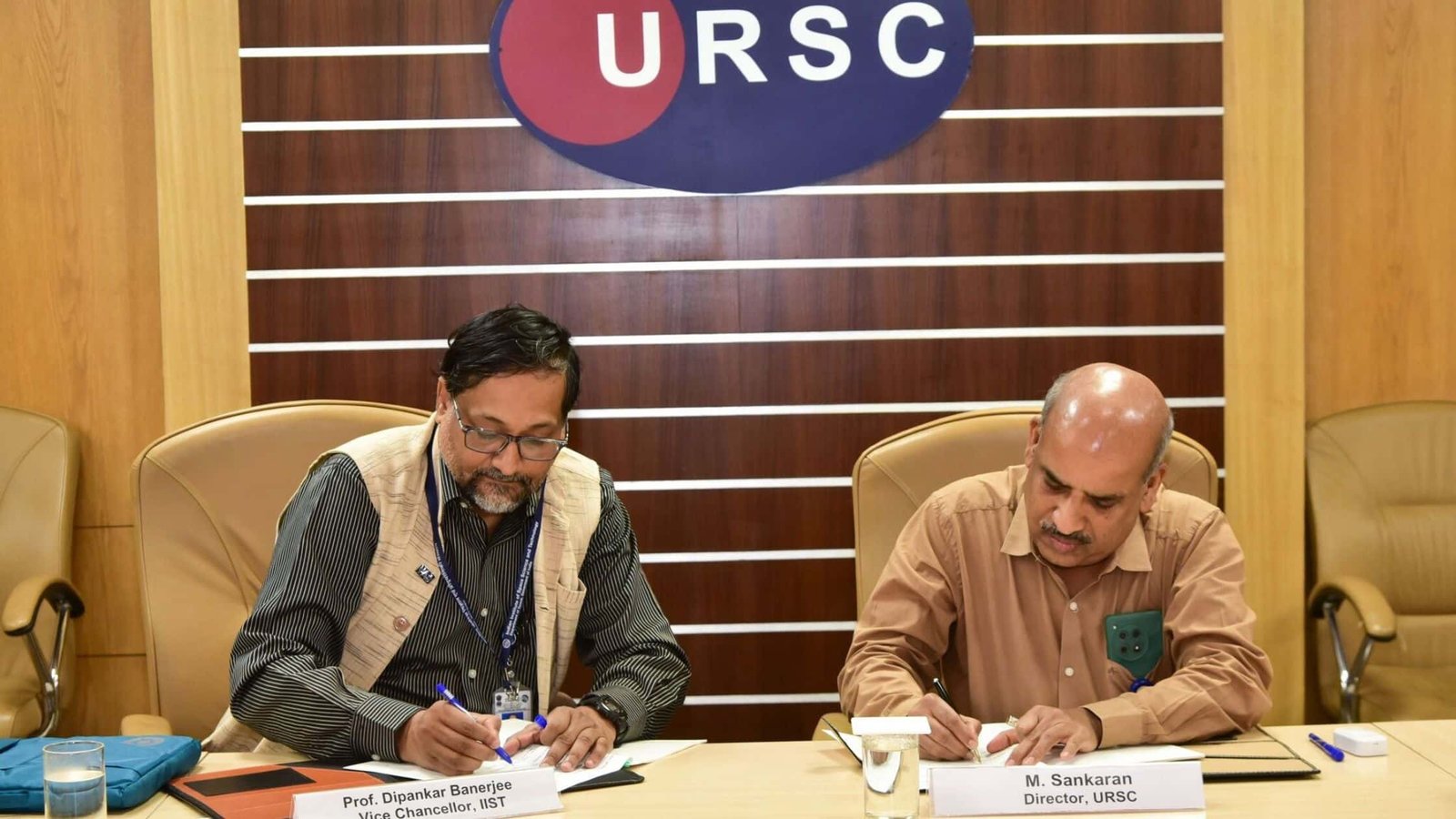Jobs & Careers
Outsourcing Crackdown Looms in Washington, India’s $100 Billion IT Industry on Edge

The call to “bring jobs back to America” is echoing once again in Washington, this time with India in focus.
What began as a campaign refrain has now entered policy deliberations within President Donald Trump’s administration and among his supporters, raising the prospect of new limits on cross-border IT services.
Republican senator from Ohio, Bernie Moreno, has introduced the Halting International Relocation of Employment Act (HIRE Act).
The bill seeks to impose a 25% tax on payments made by American companies to foreign firms for services provided to US customers, mainly targeting outsourcing.
It also blocks such transactions from being tax-deductible, requires companies to report them to the government, and directs the tax proceeds into job training and workforce programs in the United States.
If passed, the measure would apply to payments made after December 31, 2025.
Right-wing commentator Laura Loomer, reportedly a close aide to President Donald Trump, claimed on X that “the President is now considering blocking US IT companies from outsourcing their work to Indian companies.”
She added: “In other words, you don’t need to ‘press 2’ for English anymore. Make Call Centers American Again!”
The scale
For Indian outsourcing firms, which have spent decades building a $100 billion export industry around US clients, the signals are troubling, especially at a time when they are already grappling with disruption from artificial intelligence and muted growth.
Most large IT companies have been reporting only single-digit revenue increases.
India’s IT and IT-enabled services industry is valued at more than $250 billion annually, with about $200 billion generated from exports. Software services exports alone stood at $190.7 billion in FY 2023–24, according to the Reserve Bank of India’s annual survey on software and IT-enabled services exports.
The United States remains the largest client market, accounting for around 54% of India’s software services exports, over $100 billion a year in outsourcing revenue flowing from India to the US.
The impact
Any move to restrict outsourcing would weigh heavily not just on corporate earnings in Bengaluru and Hyderabad, but also on the livelihoods of millions of Indian technology professionals.
The debate is being closely tracked by both the Union and the state governments. Policymakers have long been criticised for failing to secure lasting visa concessions in the critical H-1B category despite years of lobbying.
Unearthinsight founder and CEO Gaurav Vasu noted that if the HIRE Act is enacted, the first companies to be hit would be US enterprises across sectors that depend heavily on outsourcing, including Cisco, American Express, Ford, General Electric, JPMorgan, Citi, BlackRock, American Airlines, Walmart, and McDonald’s.
US corporations have long relied on outsourcing to low-cost destinations such as India, Mexico, the Philippines, and Poland, he observed. Forcing them to insource operations could significantly raise costs, hurting profitability and stock market performance. UnearthInsight estimates that insourcing could increase enterprise costs and reduce margins by 1–2%.
“The ripple effect of such a policy will extend to the global outsourcing industry, with India bearing a substantial impact,” Vasu said. “This will slow down the growth of the close to $300 billion Indian technology sector, including IT services, Global Capability Centers, and adjacent industries directly or indirectly connected to outsourcing.”
Vasu and another analyst said companies would need to adopt a wait-and-watch approach.
Stating that it is too early to comment, Karnataka information technology (IT) minister Priyank Kharge said the potential US tariffs on Indian IT services are unlikely to disrupt the country’s $280-billion export sector.
Speaking at the launch of the Karnataka Mid-Market GCC Report and the KATALYST GCC Handbook on Tuesday, he highlighted the country’s strong offshore delivery model and the global reliance on its technology talent.
Diversification a key?
Saurabh Gupta, president of research and advisory firm HFS Research, said that unlike past downturns driven by economic cycles, this crisis is man-made, with repercussions not only for Indian IT providers, but also for US enterprises that are already struggling with rising costs from tariffs.
“Any restrictions on outsourcing and broader IT services would squeeze both supply and demand sides, making delivery more expensive and less predictable,” he said.
Indian IT companies now face the challenge of diversifying markets, innovating service models, and strengthening domestic growth to cushion against tighter trade barriers.
Vasu noted that Indian IT firms are already relatively diversified, with 30–40% of revenues coming from non-US markets, where growth has been strongest. Non-US segments have been expanding at 8–12% annually.
“HCLTech saw 8.2% year-on-year growth in its ‘rest of the world’ market, Coforge 12.6%, and LTTS 26%. TCS, too, reported 10% growth in the MEA region during Q1 FY26,” he said.
“The demand environment outside the US has remained resilient, with Europe in particular driving high growth last quarter. Beyond Europe, Asia Pacific and EMEA are emerging as attractive markets, boosted by modernisation and digital transformation needs.”
A senior manager at a Big Four firm in Bengaluru, seeking anonymity, said the potential blocking of outsourced jobs could disrupt established service delivery processes, sharply raise costs for US enterprises, and dent India’s critical role in healthcare billing.
“This would have ripple effects on both nations’ economies and the healthcare sector in particular, which relies on efficient offshore billing operations,” he said, adding that he was apprehensive about his own job given his work for the US healthcare industry.
In a LinkedIn post, Accenture’s global lead for GCC Transformation & Reinvention, Sridhar M said he has been working with clients across the globe on deep tech and innovation projects.
“Today’s technology breakthroughs happen when the best minds collaborate across borders. Disrupting this interconnected ecosystem through policy interventions could mean higher costs that slow down R&D investments, reduced innovation speed when projects can’t access the right talent, and critical skill gaps that impact competitiveness,” he wrote.
Rather than viewing this as countries competing against each other, he noted, the focus should be on creating partnerships where everyone wins—local job creation and global innovation working hand in hand.
Nasscom declined to comment on AIM’s queries.
The post Outsourcing Crackdown Looms in Washington, India’s $100 Billion IT Industry on Edge appeared first on Analytics India Magazine.
Jobs & Careers
Mira Murati’s Thinking Machines Cracks the Code on LLM Nondeterminism

Large language models (LLMs) often behave unpredictably during inference, producing different outputs even when given the same prompt.
Thinking Machines, an AI company founded by former OpenAI CTO Mira Murati, says it has identified the root cause of this nondeterminism and developed a solution that could make inference reproducible and reliable.
In a blog post titled “Defeating Nondeterminism in LLM Inference”, the company explained that the problem goes beyond the well-known issue of floating-point arithmetic and GPU concurrency.
While rounding errors from parallel computations do play a role, Thinking Machines argues that the real culprit is the lack of batch invariance in widely used inference kernels.
Batch invariance means that a model’s output for a given prompt should remain identical regardless of the batch size or how requests are grouped together. In current systems, many operations—such as matrix multiplications, attention mechanisms, and normalisation—change their internal computation strategies depending on batch size.
This variation in reduction order introduces tiny numerical differences, which can cascade into divergent outputs over long generations.
To address this, the team built batch-invariant kernels for key operations, including RMSNorm, matmul, and attention. Testing on the Qwen-3-8B model, they found that under default settings, 1,000 runs of the same prompt at temperature 0 produced 80 unique completions. With the modified kernels, all 1,000 completions were identical, demonstrating full reproducibility.
The trade-off, however, is speed. The batch-invariant setup ran slower than default inference, though optimisations to the attention kernel helped reduce the gap. Still, Thinking Machines argues that the performance cost is a fair price for the gains in determinism, especially for use cases in research, safety, and debugging.
“Reproducibility is a bedrock of scientific progress. However, it’s remarkably difficult to get reproducible results out of large language models.” the blog noted, adding that eliminating nondeterminism could also reduce discrepancies between training and inference phases of LLM deployment.
By reframing nondeterminism as a batch invariance problem, the company hopes to influence the design of future inference engines, where determinism may become as critical as raw speed.
The post Mira Murati’s Thinking Machines Cracks the Code on LLM Nondeterminism appeared first on Analytics India Magazine.
Jobs & Careers
TCS Launches Chiplet-Based Engineering Services to Boost Semiconductor Innovation

Tata Consultancy Services (TCS) has launched its chiplet-based system engineering services to help semiconductor companies design next-generation chips. TCS aims to enable faster, more efficient and powerful processors at a time when demand for advanced semiconductors is rising.
The company said that the new services are designed to support chipmakers as the industry shifts from traditional chip design to chiplet-based systems.
“TCS Chiplet-based System Engineering services will help semiconductor enterprises accelerate chiplets tapeout, driving flexibility, scalability and faster time to market,” said V Rajanna, president for technology, software and services at TCS.
Why Chiplet-Based Design Matters
The semiconductor industry faces bottlenecks in scaling and making chiplet-based design a preferred approach. Smaller chips can be mixed and matched to meet varied needs, enabling faster product launches and cost reduction.
With demand driven by AI, cloud computing, smartphones, electric vehicles and connected devices, this shift comes at a critical time.
India’s semiconductor market, valued at $45–50 billion in 2024–2025, is projected to grow to $100–110 billion by 2030. Backed by the India Semiconductor Mission, the country is aiming to become a global hub for chip design and manufacturing.
TCS’s new services are expected to strengthen this momentum by giving companies access to chip-to-system engineering expertise.
TCS in the Semiconductor Industry
TCS has over 20 years of experience in the semiconductor sector and offers a portfolio of chip-to-system engineering services. Its offerings include design and verification of UCIe and HBM standards, as well as advanced package design such as 2.5D and 3D interposers. The company has also worked with a North American semiconductor firm to integrate chiplets into AI processors, reducing delivery timelines.
In February this year, the Indian IT giant also announced a collaboration with Salesforce to enhance the use of AI in the manufacturing and semiconductor sectors. As part of this partnership, TCS launched three key initiatives to improve sales and service efficiency. The Semiconductor Sales Accelerator was expected to help businesses increase sales by providing data-driven insights.
The post TCS Launches Chiplet-Based Engineering Services to Boost Semiconductor Innovation appeared first on Analytics India Magazine.
Jobs & Careers
IIST, URSC Sign MoU to Develop Venus Mission Payload

The Indian Institute of Space Science and Technology (IIST) has signed a memorandum of understanding (MoU) with the UR Rao Satellite Centre (URSC) for the development of the Retarding Potential Analyzer for Venus (RPA-V) payload.
The project aims to study the ionosphere of Venus. According to IIST’s LinkedIn post, the project is expected to provide key insights into the dynamics of the Venusian ionosphere and its interaction with solar wind.
The RPA-V payload will be developed under the leadership of professor Umesh R Kadhane, with support from faculty members Anoop CS, Immanuel Raja, Sooraj VS, R Sudharshan Kaarthik, Pradeep Kumar P and Rajeevan PP.
Building on Past Missions
IIST has been given this responsibility due to its earlier success with ARIS-1 and ARIS-2 missions. These projects demonstrated the institute’s capability in building space-qualified hardware. The new payload continues this track record and will expand India’s planetary exploration programme.
“The RPA-V payload is set to deepen our understanding of Venus’s atmosphere,” IIST stated in the post.
The project also holds academic value, with IIST students set to contribute to its development. Their participation will provide hands-on training in space plasma research. IIST noted that this experience would help prepare a talented workforce for India’s upcoming indigenous space programmes.
“This collaboration will strengthen IIST’s position as a world-class research hub for developing ionospheric measurement devices, while simultaneously shaping the skilled workforce needed for India’s future space science endeavours,” the institute added.
The post IIST, URSC Sign MoU to Develop Venus Mission Payload appeared first on Analytics India Magazine.
-

 Business2 weeks ago
Business2 weeks agoThe Guardian view on Trump and the Fed: independence is no substitute for accountability | Editorial
-
Tools & Platforms1 month ago
Building Trust in Military AI Starts with Opening the Black Box – War on the Rocks
-

 Ethics & Policy2 months ago
Ethics & Policy2 months agoSDAIA Supports Saudi Arabia’s Leadership in Shaping Global AI Ethics, Policy, and Research – وكالة الأنباء السعودية
-

 Events & Conferences4 months ago
Events & Conferences4 months agoJourney to 1000 models: Scaling Instagram’s recommendation system
-

 Jobs & Careers2 months ago
Jobs & Careers2 months agoMumbai-based Perplexity Alternative Has 60k+ Users Without Funding
-

 Podcasts & Talks2 months ago
Podcasts & Talks2 months agoHappy 4th of July! 🎆 Made with Veo 3 in Gemini
-

 Education2 months ago
Education2 months agoMacron says UK and France have duty to tackle illegal migration ‘with humanity, solidarity and firmness’ – UK politics live | Politics
-

 Education2 months ago
Education2 months agoVEX Robotics launches AI-powered classroom robotics system
-

 Funding & Business2 months ago
Funding & Business2 months agoKayak and Expedia race to build AI travel agents that turn social posts into itineraries
-

 Podcasts & Talks2 months ago
Podcasts & Talks2 months agoOpenAI 🤝 @teamganassi





















